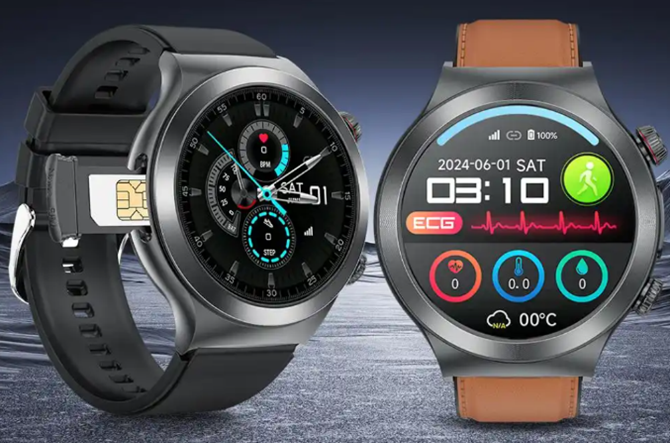-Luyuan Heart Forum-
Wearable technologies such as smartwatches provide doctors with new ways to monitor patient health and detect cardiovascular risk factors. Metrics such as total daily steps and average resting heart rate have been used to predict cardiovascular health.
However, Zhanlin Chen, a medical student at Northwestern University in Chicago, has developed a new comprehensive metric for smartwatches that may provide a more reliable indicator of heart health.The findings were presented at the 2025 American College of Cardiology (ACC) Scientific Session held in Chicago, USA.
Chen stated, “Daily step count is a known predictor of cardiovascular health, but it is merely an indirect measure. It (only) reflects our level of activity, and we hope this can translate into predictions about outcomes.”
Such indirect data can never provide complete information. For example, two individuals may each walk 10,000 steps daily, but if one has a significantly higher heart rate, it may indicate that their heart is working harder than normal. Similarly, heart rate alone, without the context of an individual’s physiological activity, can appear incomplete. Chen combined these two metrics to create a comprehensive metric called “Daily Heart Rate Per Step” (DHRPS). “Daily Heart Rate Per Step” is defined as the average daily heart rate divided by the number of steps taken each day, allowing for an understanding of how the heart responds to different activity levels throughout the day. “When we integrate these two metrics—heart rate and step count—it reflects their heart condition more accurately than looking at each metric separately.”

All of Us Research Program
Chen and his colleagues analyzed electronic health record data from 7,000 participants in the “Fitbit Smartwatch Project,” a subproject of the All of Us research program, a nationwide prospective study supported by the National Institutes of Health. The researchers correlated DHRPS with established cardiovascular disease factors and used it as the primary endpoint. Secondary endpoints included the maximum metabolic equivalents (METs) achieved during cardiovascular treadmill exercise stress tests.
They found that individuals with elevated Daily Heart Rate Per Step (in the top 25%) had worse cardiovascular outcomes compared to those in the lowest quartile. They were twice as likely to develop type 2 diabetes (95% CI 1.70-2.42), 1.7 times more likely to develop heart failure (95% CI 1.00-3.14), 1.6 times more likely to have hypertension (95% CI 1.32-2.02), and 1.4 times more likely to have coronary atherosclerosis (95% CI 1.14-1.82). No association was found between elevated Daily Heart Rate Per Step and the risk of stroke or heart attack. Finally, the phenotype-wide association study based on DHRPS indicated that DHRPS had a more significant association with cardiovascular disease factors compared to daily heart rate or step count (P<1×10⁻⁵⁵).
Dr. Eugene Yang, a cardiologist at the University of Washington in Seattle, who studies the application of wearable devices and other new technologies in medicine, stated that while this new metric needs to be validated through more refined randomized or prospective studies, it suggests that wearable technology can be used to improve people’s health. He said, “We are entering a very exciting era. If we can accurately measure many metrics—blood pressure, blood oxygen saturation, heart rate, daily activity levels, and sleep patterns—then it will be more powerful in predicting risks.”
This metric is simple to calculate, and individuals can compute it based on data collected by their smartwatches, or it could be integrated into smartwatch applications in the future. This study only provides preliminary validation of the DHRPS method, and the cross-sectional study design cannot determine the temporal relationship between Fitbit measurements and cardiovascular disease diagnoses. Chen hopes that his new metric will be validated in further research.
Chen stated, “We can consider incorporating data from wearable devices into cardiovascular disease risk assessments. This could lead to changes in medical interventions, risk stratification, and screening.” Current calculations do not take into account individuals’ fitness levels or other environmental and physiological factors.

Week
Three
Mutual
See
“Luyuan Heart Forum”

Chen Luyuan
Department of Cardiology, Guangdong Provincial People’s Hospital
Guangdong Provincial Cardiovascular Disease Research Institute